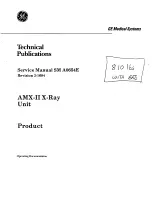
Appendix B: Algorithms
B–14
TLS 216 User Manual
4. The logic scope calculates the hold time according to the following equation:
Setup
CrossLastćMCrossClock
Positive setup times indicate that the clock edge occurred after the last transition
of the waveform group. Negative setup times indicate that the clock edge
occurred before the last transition.
Hi Ref
Low Ref
Low Ref
Setup
Time
Clock Transition
Last Transition to
a Legal State
Hi Ref
Figure B–5: Setup Time
Timing measurement. The time between the first transition to an illegal state for
all waveforms in a group and last transition to a legal state for the same
waveforms. Skew measurements define “legal state” as a level either below the
low reference level or above the high reference level that is set in the Measure
menu. They define an “illegal state” as a level between the the low and high
reference levels.
Setup is determined in the following manner (see Figure B–6):
1. The logic scope finds the first
LowRef
crossing and the first
HighRef
crossing for each waveform in the selected group.
2. The logic scope finds the last
LowRef
crossing and the last
HighRef
crossing
for each waveform in the selected group.
3. The logic scope determines which crossing out of all the first crossings
found in step 1 occurred first for the waveform group. The crossing is called
CrossFirst
and might be either a
LowRef
or a
HighRef
crossing.
4. The logic scope determines which crossing out of all the last crossings found
in step 2 occurred last for the waveform group. The crossing is called
CrossLast
and might be either a
LowRef
or a
HighRef
crossing.
Skew
Summary of Contents for P6240
Page 5: ......
Page 7: ......
Page 15: ...Table of Contents viii TLS 216 User Manual...
Page 20: ...Getting Started...
Page 26: ...Start Up 1 6 TLS 216 User Manual...
Page 51: ...Operating Basics...
Page 53: ...Overview 2 2 TLS 216 User Manual...
Page 73: ...Acquisition 2 22 TLS 216 User Manual...
Page 82: ...Reference...
Page 94: ...Adjusting the Vertical Setup 3 12 TLS 216 User Manual...
Page 104: ...Choosing an Acquisition Mode 3 22 TLS 216 User Manual...
Page 112: ...Choosing a Group Display Mode 3 30 TLS 216 User Manual...
Page 122: ...Customizing the Display 3 40 TLS 216 User Manual...
Page 130: ...Customizing the Display Colors 3 48 TLS 216 User Manual...
Page 162: ...Measuring Waveforms Automatically 3 80 TLS 216 User Manual...
Page 168: ...Measuring Waveforms with Cursors 3 86 TLS 216 User Manual...
Page 178: ...Printing a Hardcopy 3 96 TLS 216 User Manual...
Page 186: ...Probing of Circuits 3 104 TLS 216 User Manual...
Page 198: ...Saving and Recalling Waveforms 3 116 TLS 216 User Manual...
Page 222: ...Triggering on Patterns 3 140 TLS 216 User Manual...
Page 252: ...Triggering on States 3 170 TLS 216 User Manual...
Page 256: ...Viewing Status 3 174 TLS 216 User Manual...
Page 261: ...Appendices...
Page 283: ...Appendix B Algorithms B 18 TLS 216 User Manual...
Page 285: ...Appendix C Packaging for Shipment C 2 TLS 216 User Manual...
Page 290: ...Glossary...
Page 302: ...Glossary Glossary 12 TLS 216 User Manual...
Page 303: ...Index...
Page 319: ...Index Index 16 TLS 216 User Manual...
Page 320: ......
Page 321: ......
















































